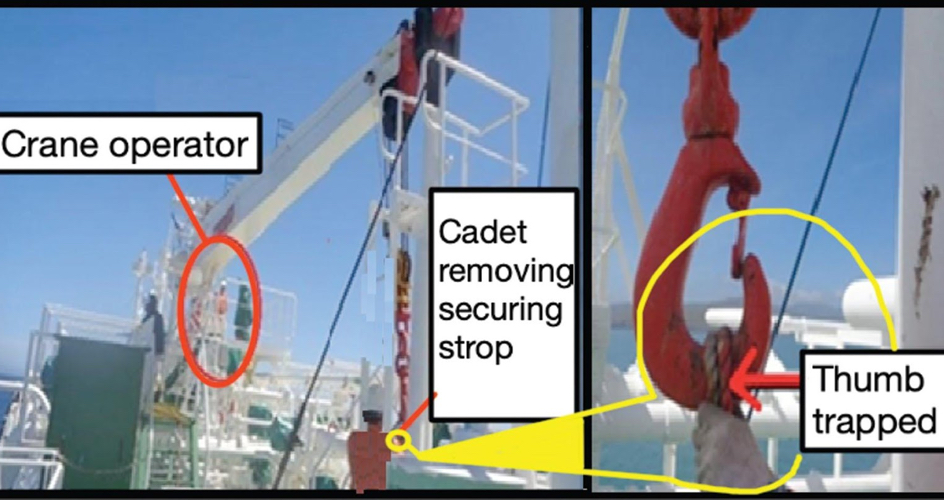When cranes are used to (un)load ships, there is always a risk of injuries. Safely executing crane operations on board a ship essentially requires three crew members; one for the crane controls, one to manipulate the hook and strops and one to signal to or communicate with the crane operator.
When cranes are used to move cargo, risks include falling loads and being hit by moving cranes or falling into the water as a result. Accidents can occur due to for example operator errors, mechanical failures, or lack of safety equipment.
According to the Maritime Injury Center, one of the main causes of accidents involving cranes for loading and unloading shipping cargo is operator error. This can occur due to lack of training or fatigue. Yet, ‘operator error can also come from poor communication. Crane operators must be in radio contact with other workers to make loading and unloading go smoothly and safely,’ states the Maritime Injury Center on its website.
In a recent Mars Report (these reports are published anonymously by The Nautical Institute with accident prevention in mind), an accident occurred during crane operations because too few crew were assigned to the job. In this case, no-one was in direct contact with the crane operator. A transcript of what happened:
A deck rating and a cadet were bringing the vessel’s hose handling crane into operation. The first manoeuvre was to release the hook from its stowed position. The cadet was handling the securing strop on the crane’s hook while the deck rating lowered the crane block.
As the cadet began to remove the securing strop, the rating noticed the crane wire getting too slack on its drum; he immediately heaved up on the wire without informing the cadet. The hook moved suddenly upwards, trapping the cadet’s left thumb between the hook and the securing strop.

The victim suffered a severe crush injury to the thumb and was signed off the vessel for medical attention ashore.
Although the injury in this case was relatively minor, crane accidents often do have serious consequences. This means crane operations and the risks involved need to be discussed beforehand and be executed with enough workers at hand. A crane operator is usually quite a distance from the hook and load he operates. So he needs someone to tell him or her what is going on there.
Mars Reports
This accident was covered in the August Mars Reports, originally published as Mars 201951, that are part of Report Number 322. A selection of this Report has also been published in SWZ|Maritime’s September issue. The Mars Reports are also published on SWZ|Maritime’s website to help prevent maritime accidents.
More reports are needed to keep the scheme interesting and informative. All reports are read only by the Mars coordinator and are treated in the strictest confidence. To submit a report, please use the Mars report form.








